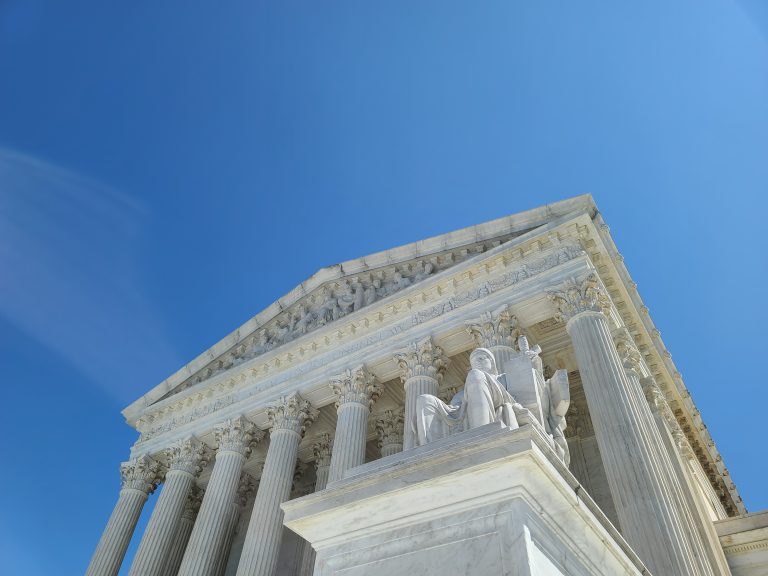On Thursday, the Supreme Court issued the most significant Second Amendment decision in more than a decade when it struck down New York’s restrictive “may-issue” standard for gun-carry permit issuance.
Justice Clarence Thomas, writing on behalf of the Court, found that allowing government officials broad discretion in determining when an otherwise law-abiding person can be issued a carry permit is unconstitutional. The ruling essentially establishes “shall-issue” permitting as the constitutional floor for gun carry nationwide. But beyond confirming a constitutional right to bear arms, the opinion explained the test lower courts will be expected to review Second Amendment cases by moving forward.
“When the Second Amendment’s plain text covers an individual’s conduct, the Constitution presumptively protects that conduct,” Thomas wrote. “The government must then justify its regulation by demonstrating that it is consistent with the Nation’s historical tradition of firearm regulation. Only then may a court conclude that the individual’s conduct falls outside the Second Amendment’s ‘unqualified command.'”
This test, reliant on the text and informed by history, will have jurisprudential implications far beyond the right to bear arms outside the home. And with four other Second Amendment cases currently awaiting Supreme Court review, we could see the extent of those implications very soon.
Here’s a review of those cases awaiting a cert grant and what their fate might look like in a post-Bruen world.
At issue in Young is a challenge to Hawaii’s may-issue gun carry regime along the lines of the challenge the court just ruled on in NYSRPA v. Bruen, though Hawaii’s law is allegedly applied much more strictly.
“Unlike the New York scheme, where some permits actually have been issued, Hawaii’s scheme is a permitting system in name only, because the statute has been used to deny all permit applications during the nine years this case has been in litigation,” the challengers wrote in their petition for Supreme Court review.
In an en banc ruling in 2021, the Ninth Circuit Court of Appeals held that the Second Amendment does not apply outside the home at all. The Court’s decision in Bruen invalidates this holding. Expect this decision to be subject to a grant, vacate, and remand (GVR) order by the Court or otherwise kicked back to the lower courts, where the petitioners will ultimately be successful.
This case concerns Maryland’s “assault weapons” ban and whether or not a government can criminally prohibit a category of arms in common use.
The Fourth Circuit upheld Maryland’s ban in September of 2021 after applying a two-tiered balancing test that the Justices in Bruen explicitly rejected.
“If the last decade of Second Amendment litigation has taught this Court anything, it is that federal courts tasked with making such difficult empirical judgments regarding firearm regulations under the banner of ‘intermediate scrutiny’ often defer to the determinations of legislatures,” Justice Thomas wrote. “But while that judicial deference to legislative interest balancing is understandable—and, elsewhere, appropriate—it is not deference that the Constitution demands here. The Second Amendment ‘is the very product of an interest balancing by the people’ and it ‘surely elevates above all other interests the right of law-abiding, responsible citizens to use arms’ for self-defense. It is this balance—struck by the traditions of the American people—that demands our unqualified deference.”
Because the test used to uphold Maryland’s assault weapons ban was summarily dismissed in Bruen, this case is ripe for revisiting too. The Court could potentially agree to hear the case, but more than likely, it will GVR back to the Fourth Circuit for rehearing under the newly established test.
A textual and historical analysis makes it more likely that Maryland’s assault weapons ban will get struck down, given the popularity of AR-15s and other banned guns. Still, it will depend on how it is applied.
This case deals with California’s prohibition on possessing ammunition magazines capable of holding more than ten rounds and the state-mandated confiscation of magazines owned before the ban.
An en banc panel for the Ninth Circuit upheld California’s ban under the same two-step interest balancing test, overturning a district judge’s earlier decision to strike the law.
The decision notably featured a fiery dissent from Judge Lawrence VanDyke, who chastised the test used in the Ninth Circuit’s decision.
“It should be presumptively unconstitutional to burden constitutional rights,” Judge Lawrence VanDyke wrote. “But looking at our court’s cases, you would assume that any burden on the right to bear arms is presumptively permitted. I’ve described before how our circuit’s version of Second Amendment’ heightened’ scrutiny has no height. It is practically indistinguishable from rational basis review.”
Expect this case to similarly get GVR’d, where the chances of California’s ban on magazines being struck down increases significantly under a text and history test given, again, how common the banned magazines are.
Similar to Duncan v. Bonta, this case seeks to challenge New Jersey’s ban and confiscation of ammunition magazines capable of holding more than ten rounds.
A divided three-judge panel of the Third Circuit upheld New Jersey’s ban in 2018. A petition for rehearing en banc was denied in 2020. The fate of this case will probably be similar to Duncan, with a likely GVR order from the Court.
In sum, the Court’s rejection of two-step scrutiny tests in favor of the requirement that lower courts apply a “text, as informed by history” test should result in a much more favorable legal environment for gun-rights advocates moving forward beyond simply the right to carry a firearm beyond the home. This new test places a steeper burden on government officials seeking to justify a particular gun control law. Those laws not deeply rooted in the tradition of gun regulation near the time of the Second Amendment’s ratification, or that of the Fourteenth Amendment, could have a hard time passing muster.
But as with the test initially contemplated in Heller and later McDonald, a lot will depend on how lower court judges decide to apply it moving forward. And how willing the Supreme Court will be to step in when they don’t like how those judges handle gun cases.







One Response
Thank you sir for your analysis, and reminding me which cases were waiting on ‘Bruen’.
I’d like to see WLP and Wife finally move aside, along with their board cohorts, so we can rewrite those bylaws and avoid future dominations.
And then maybe we can break up our NRA into an “NRA 2.0”, with an ILA still mightily pressuring Congress, but with everything else diffused to the regional level (Ex. TX TSRA and members contributing resources to LA to help them finally implement Constitutional Carry) and state level (education and training go here, thinking that because insurance regulations happen here)